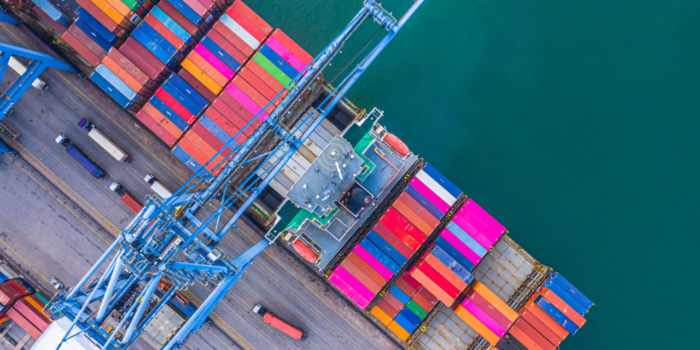The Steamship Mutual has issued a Risk Alert focusing on container cargo operations to highlight that training and reinforcement of safe work practices is of paramount importance not only to ensure an individual’s personal safety but also to ensure that the work area remains safe for others.
The Club notes that incidents involving serious injuries and fatalities during cargo operations on container vessels are not uncommon and refers to contributory factors that can led to an incident and lessons learned from previous cases.
Common container operation issues:
- large number of cargo units moved at a fast pace
- large / heavy loads (cargo / pontoons) being moved,
- blind spots for the crane/forklift operators,
- tight access between containers,
- cargo stacked over multiple tiers,
- hazardous material (dangerous goods),
- manual handling heavy lashing / securing equipment and
- large numbers of shore workers on board
The Club mentions that accidents can occur due to human element issues, design, layout, or other aspects of the work area, equipment failure, unsafe conditions and other factors. For example:
Human element : Rest hours / Fatigue, Incorrect/inadequate PPE, Unauthorised (enclosed space) entry, Incorrect handling/lifting of heavy or large objects (twistlocks, lashing gear etc) when working in close proximity to others.
Design, layout, or other aspects of the work area: Available space (any restriction on movement), Load bearing capability (platforms, ladders), Illumination, Ventilation
Equipment failure: Lashing and securing gear, Staging and ladders
Unsafe condition: Openings without safety rails or similar (hatch openings, accessway hatches, removable railings etc), Loose gear on hatch covers (requires removal before lifting), Unsecured cargo – cargo shifts/moves/spills.
Other factors: Lift path (during loading/discharging/restow), Weather conditions, Vessel’s motion (during heavy lifts by vessels own lifting gear), Overhead hazards
Referring to past accidents, the Cub concludes that a wide range of hazards that have resulted in serious, and often tragic consequences, could have been prevented by following appropriate procedures and exercising due care and attention and sheds focus on the following key areas for consideration:
- Risk identification
- Effective barriers and control for risk mitigation
- Effective training
- Understanding of workplace safety
- Effective implementation of workplace safety
- Effective safety culture
All parties involved in cargo operations should recognise their shared interest in ensuring that cargo operations are carried out in a safe and efficient manner. Tools for supporting a safer working environment should include a near miss reporting system to improve safety awareness and a no blame safety culture that encourages the crew to speak out when they observe or experience unsafe working practices.
…the Steamship Mutual says in the guidance.
Furthermore, it is equally important to ensure that the identified risk control measures are effectively implemented. Physical control measures such as, lockout/tag-out, safety signs, barriers, markers, tagging and isolating damaged or condemned gear, etc should be applied as appropriate. Training needs should be identified, and an appropriate training programme implemented. Vessels, in their equipment and design, constantly evolve, often with new operational characteristics that will need to be considered along with crew training, experience, and familiarity. PPE should be in good condition, of correct size/fit and when correctly worn can save lives.






























































